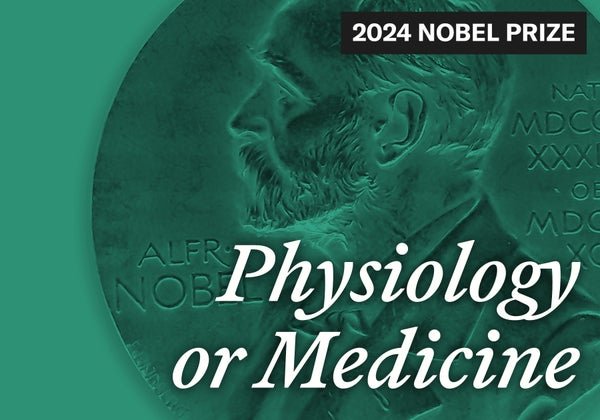October 7, 2024
3 min read
Nobel Prize in Physiology or Medicine Awarded for Discovery of MicroRNA Gene Regulation
The award was given to Victor Ambros and Gary Ruvkun for a discovery of an important gene-manipulating mechanism in cells

vanbeets/Getty Images (medal)
Every cell in our body contains the same set of genetic instructions, or DNA. Yet only some of these genes are expressed in each cell, leading to the production of proteins that perform the cell’s unique functions. The 2024 Nobel Prize in Physiology or Medicine was awarded on Monday to U.S. scientists Victor Ambros and Gary Ruvkun for the discovery of microRNA, a molecule that performs this important regulatory process.
The discovery opened up a new field in gene regulation, explaining how only some of the many genetic instructions in DNA result in functional proteins in different cells. The research was initially conducted in the tiny worm C. elegans, but the mechanism has since been found in the genes of humans and most other animals.
Ambros performed his part of the work at Harvard University, and he is currently a professor of natural sciences at the University of Massachusetts Medical School. Ruvkun carried out his research concurrently at Massachusetts General Hospital and Harvard Medical School, where he is now a professor of genetics.
On supporting science journalism
If you’re enjoying this article, consider supporting our award-winning journalism by subscribing. By purchasing a subscription you are helping to ensure the future of impactful stories about the discoveries and ideas shaping our world today.
“The seminal discovery of microRNA has introduced a new and unexpected mechanism of gene regulation,” Olle Kämpe, vice chair of the Nobel Committee for Physiology or Medicine 2024, said while describing the research during a press conference in Stockholm on Monday.
In cells, genes are transcribed into messenger RNA (mRNA), which is then translated into proteins. Proteins perform the many vital functions within any cell, whether it’s in nerve tissue or muscle or the immune system—or anywhere else. Problems with gene function can lead to conditions such as cancer, diabetes or autoimmune disease.
As early as the 1960s, scientists had discovered that proteins called transcription factors could bind to genes and control what parts of those genes got transcribed into mRNA. This mechanism was thought to be the primary way genes were regulated. But it turned out to be more complicated.
In the 1980s, Ambros and Ruvkun were working together as postdoctoral fellows in the laboratory of Robert Horvitz, who won the 2002 Nobel Prize for describing the genetic regulation of cell death in C. elegans. Researchers working with these organisms had previously discovered two “mutant” genetic forms of the roundworm that developed differently. One of them, known as lin-4, results in a larger worm, whereas the other, lin-14, leads to a smaller one. Ambros showed that the lin-4 gene was somehow negatively regulating the lin-14 gene, but it wasn’t clear how.
Later, at Harvard, Ambros worked to “clone” or make copies of the lin-4 gene—but this resulted in a very tiny RNA molecule that was too small to produce a protein. At the same time, Ruvkun, then at Mass General and Harvard, was studying lin-14. He found that lin-4 was not blocking the production of lin-14 at the mRNA level, but rather was impeding its translation into proteins at some later stage. Ruvkun and Ambros decided to compare their findings and found that part of the sequence of lin-4 mRNA matched that of lin-14’s mRNA end region, which isn’t involved in encoding a protein. They discovered that the binding of this lin-4 mRNA to lin-14 mRNA prevented the latter’s production; this represented a new mechanism of gene regulation, orchestrated by tiny molecules called microRNA.
At first, the researchers thought this mechanism might be unique to C. elegans. But in 2000, Ruvkun identified a second microRNA called let-7 that was present in humans and throughout the animal kingdom. Scientists now know that humans have more than 1,000 different microRNA genes, and that the majority of genes are regulated by microRNA.
The disruption of these microRNA networks is believed to play a role in how cancers grow, pointing toward potential treatments.
Ambros and Ruvkun “were looking at two worms that looked a bit funny and decided to understand why, and then they discovered an entirely new mechanism for gene regulation,” Kämpe said. “I think that’s beautiful.”
Editor’s Note (10/07/24): This story is being updated.








